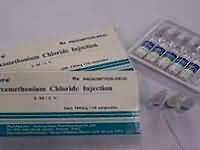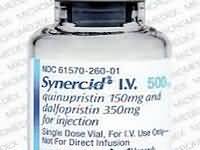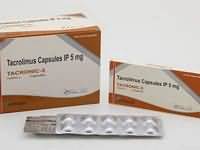Methotrexate

CLINICAL USE
Antineoplastic agent:Severe rheumatoid arthritis Severe uncontrolled psoriasis Crohn’s disease Neoplastic diseaseDOSE IN NORMAL RENAL FUNCTION
Rheumatoid arthritis: Oral, SC, IM, IV: 7.5–20 mg once a weekPsoriasis: (Oral) 10–25 mg once weekly, adjusted to responseCrohn’s disease: 15–25 mg weekly Neoplastic disease: Dose by weight or surface area according to specific indicationPHARMACOKINETICS
DOSE IN RENAL IMPAIRMENT
GFR (mL/MIN)
DOSE IN PATIENTS UNDERGOING RENAL REPLACEMENT THERAPIES
IMPORTANT DRUG INTERACTIONS
Potentially hazardous interactions with other drugsADMINISTRATION
Reconstition
Compatible with glucose 5%, sodium chloride 0.9%, compound sodium lactate, or Ringers solutionRoute
Oral, IM, IV (bolus injection or infusion), intrathecal, intra-arterial, intraventricularRate of Administration
Slow IV injectionComments
High-dose methotrexate may cause precipitation of methotrexate or its metabolites in renal tubules. A high fluid throughput and alkalinisation of urine, using sodium bicarbonate if necessary, is recommended.470 METhoTrEXATEOTHER INFORMATION
The dose is well absorbed at doses <30 mg/m2 – bioavailability is decreased by food and milk. Metabolism is via liver and intracellular metabolism to polyglutamated productsExcreted primarily by the kidneys (>90%), although small amounts via the bile. Clearance is higher in children than in adultsCalcium folinate (calcium leucovorin) is a potent agent for neutralising the immediate toxic effects of methotrexate on the haematopoietic systemCalcium folinate rescue may begin 24/32/36 hours post start of methotrexate therapy, according to local protocol. Doses of up to 120 mg may be given over 12–24 hours by IM or IV injection or infusion, followed by 12–15 mg IM, or 15 mg orally every 6 hours for the next 48 hoursRenal function should be closely monitored throughout treatmentAn approximate correction for renal function may be made by reducing the dose in proportion to the reduction in creatinine clearance based on a normal creatinine clearance of 60 mL/minute/m2Alternative dosing regimen: CrCl (mL/min) Dose>80 100%60 65%45 50%<30 AvoidDoses in renal failure from Kintzel PE, Dorr RT. Anticancer drug renal toxicity and elimination: dosing guidelines for altered renal function.
See how to identify renal failure stages according to GFR calculation
See how to diagnose irreversible renal disease
Home








